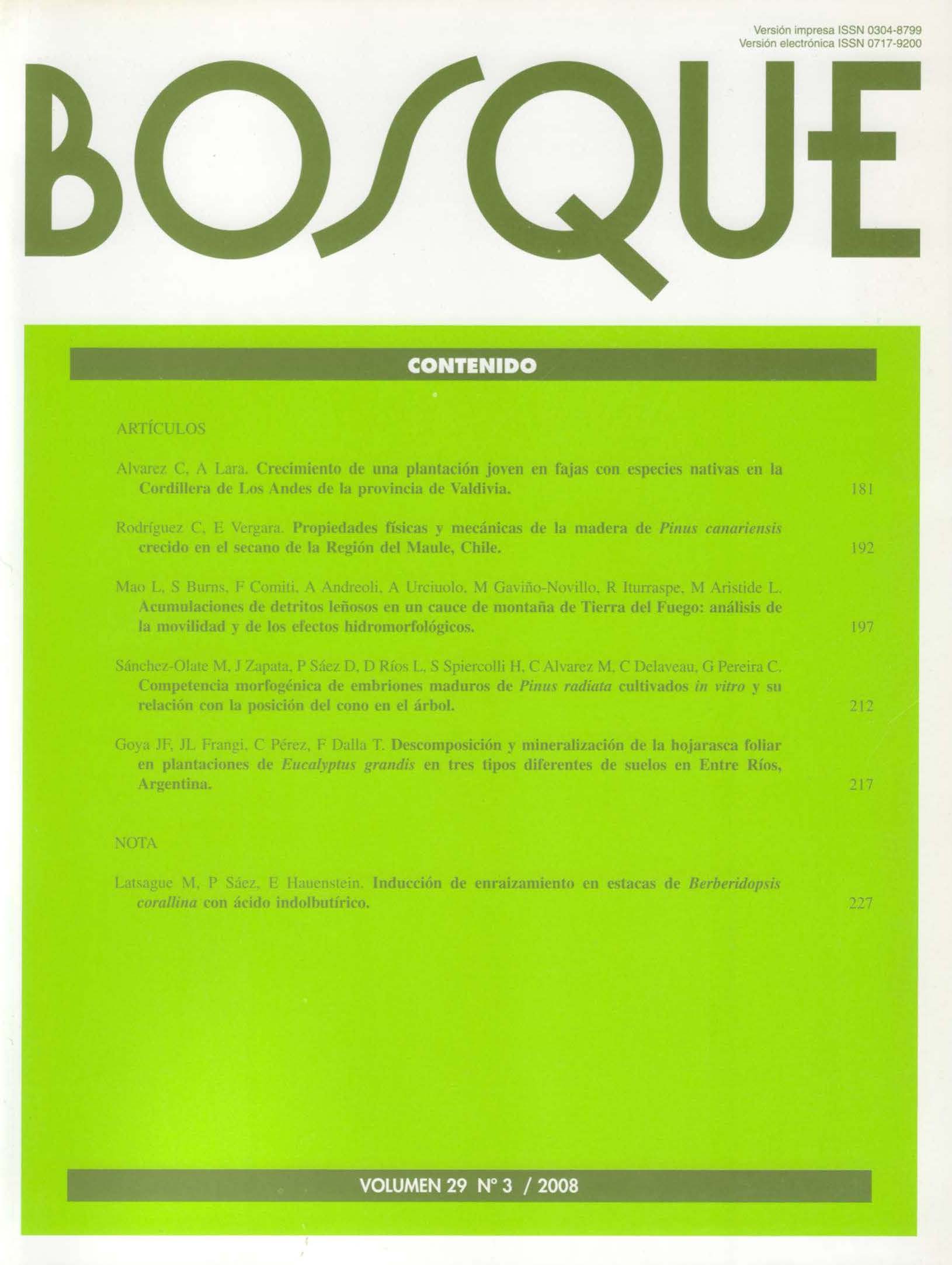Growth of a young native species strip plantation in the Valdivian Andes, Chile
Main Article Content
Abstract
The goal of this study was to assess the growth of a four year-old Nothofagus dombeyi, N. alpina and Gevuina avellana plantation in San Pablo de Tregua, in the Valdivian Andes at c. 650 m of elevation. The plantation was established in eight strips 8-11 meter wide opened on a Chusquea culeou thicket, a native bamboo species that has undergone massive die back after a mast flowering event in 2001. Strips 1 through 6 were 37-74 m long, while strips 7 and 8 were 174 and 196 m long, respectively. Old-growth forests formed the upper edge of the strips, while the lower edge was open grassland. Strips were separated by 7-10 meters of untreated thicket, dominated by a dense mass of dead standing Chusquea culms with a height of 8-11 m. Mean annual increment (MAI) in height and diameter at ground height were analyzed as a function of cover and distance to the untreated thicket between strips and to the forest edge. N. dombeyi survival and MAI in height and diameter were higher at lower cover of the thicket between strips. N. alpina showed higher diameter MAI when the cover of the thicket was <25%. This study concluded that plantations in strips for N. dombeyi that were tested show adequate survival and initial growth for ecologic restoration purposes in forests that have been logged and replaced by Chusquea thickets.

